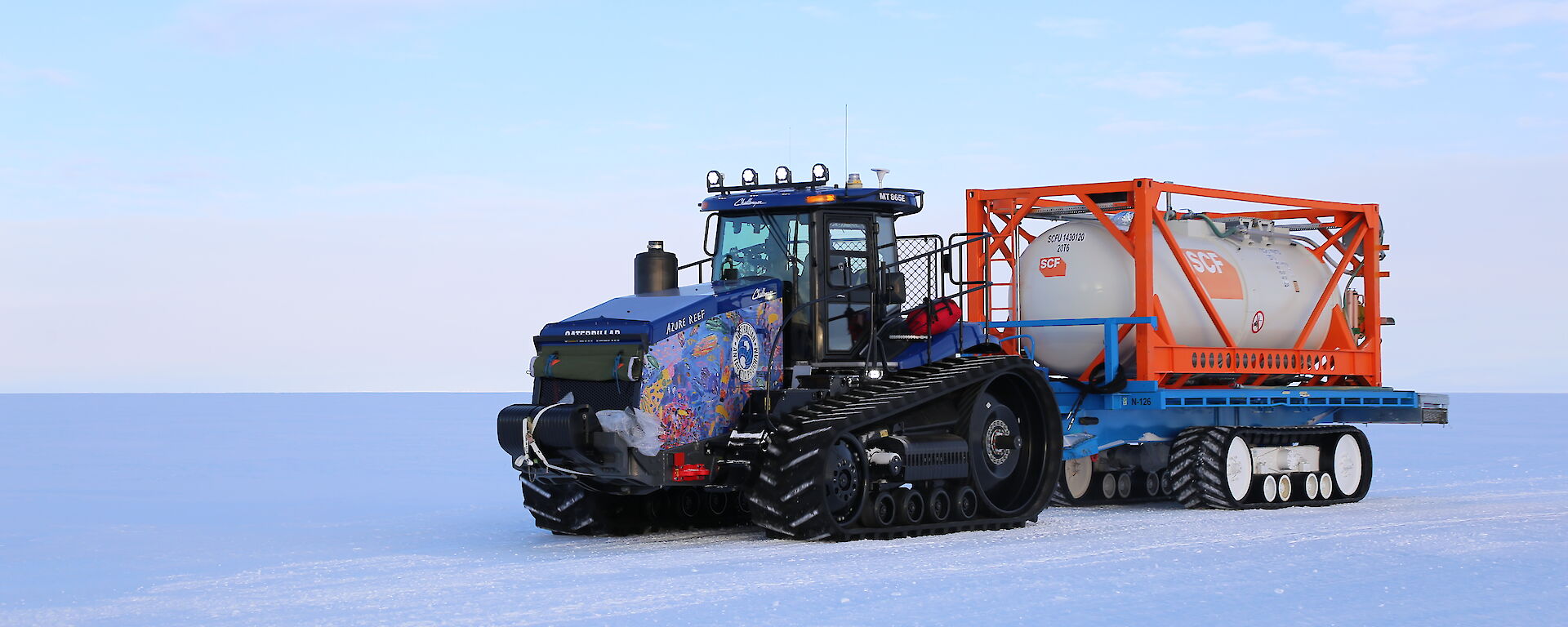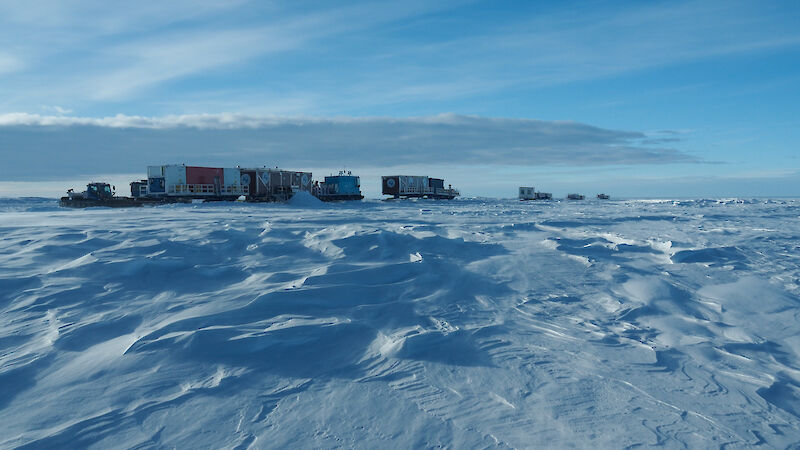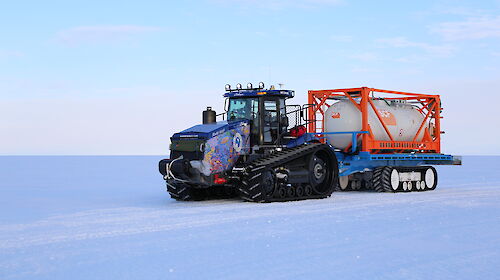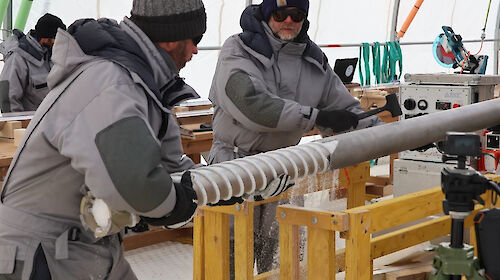On 23 December 2022, a convoy of 5 tractor traverse trains carrying the station on sleds, left Casey research station in East Antarctica.
The departure is a major step in one of the most ambitious Australian Antarctic exploration projects in 20 years.
The traverse is designed to support a camp 1,200 kilometres away at Little Dome C, where scientists plan to drill for a million year ice core in the years ahead.
This year the primary task will be to test traverse equipment and prove a path over unknown terrain as far as possible towards Little Dome C. Multiple traverses over future years will establish and support an inland station at Little Dome C to support the million year ice core project.
Old, cold but frozen gold – why we need million year ice
Australian Antarctic Division (AAD) Leading Project Scientist Dr Joel Pedro said the Million Year Ice Core project will provide new information to test climate models and resolve long-standing questions about the timing of ice ages.
“In particular, it will help answer why there was a major change in the ice ages cycles around a million years ago, with a shift from smaller ice sheets and regular 41,000-year cycles to larger ice sheets with ice ages every 100,000 years,” Dr Pedro said.
Resolving the cause of this climate transition has implications that extend to the future. The project seeks to identify the physical processes involved in the transition, the feedbacks between greenhouse gasses, ice volume, sea level, atmospheric dynamics and ocean circulation. “These are the same physical processes that will determine the response of Earth’s climate to rising greenhouse gases.
“The ice core will offer new opportunities for research into these climate feedbacks across the entire 1 million year plus record and their implications for projecting Australian climate variability.
Australia is part of an international effort to recover multiple replicated ice cores extending back at least 1.2 million years. Multiple cores are required to verify that the climate and greenhouse gas records are complete and uncompromised by flow disturbance or contamination. The Australian team is collaborating with a European project, Beyond EPICA Oldest Ice, on the recovery of independent ice core records from the Little Dome C region for joint replication and verification.
The current oldest continuous ice core is 800,000 years.
It's a long way to the top if you want to drill and core
Little Dome C sits at an elevation of 3,000 metres, making it a tough climb up the Antarctic plateau.
The surface snow and ice conditionsand extreme weather will ultimately determine how far the traverse team can travel this year.
The 10-person team, including a Field Leader, glaciologist, doctor, mechanics, electricians and engineers will spend the next month in specially-built living quarters to keep them safe in temperatures of minus 50 degrees.
AAD Traverse Capability Senior Project Leader Tim Lyons said preparing the life-supporting infrastructure had been a 5 year effort.
“We need people to be safe but also comfortable living in these 40 foot vans for weeks at a time,” Mr Lyons said.
“The living van includes a kitchen, shower, toilet and laundry facilities.
“We also have sleeping vans for up to 26 people as well as facilities for polar medicine and science.
“Think of them like caravans designed to endure the most hostile environmental conditions on Earth.”
The traverse team is expected to return in February, depending on weather and surface conditions.
Crossing into the cold frontier
Australia’s last major traverse was to the Prince Charles Mountains in 2002 and 2003 with German and United States researchers.
AAD Chief Scientist Professor Nicole Webster said a modernised traverse fleet would extend our scientific reach.
“Australia conducts world class science from our three continental stations but we need to look further afield,” Prof Webster said.
“Developing inland traverse will help us expand our knowledge in key areas, including how ice sheets are responding to climate change.
“The departure of the traverse team this year is a huge step towards meeting those future research challenges.
“I’m excited to see what Australian science can accomplish in the years ahead.”





